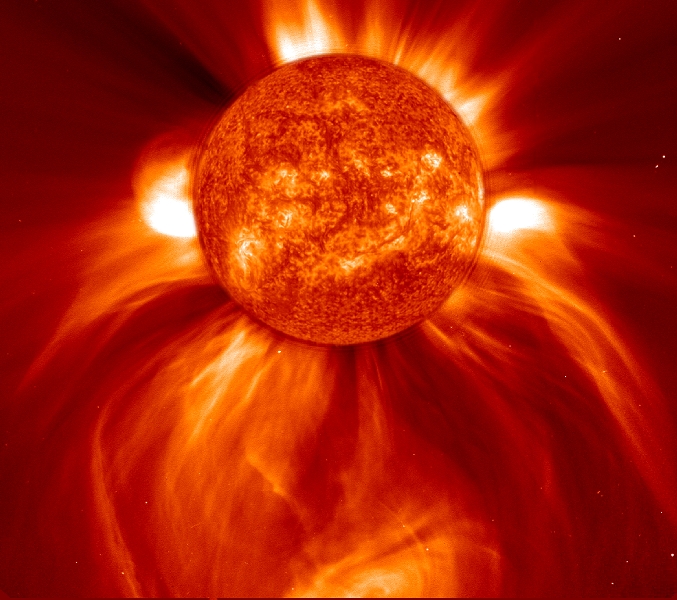Landmarks: What Makes the Stars Shine?
APS has put the entire Physical Review archive online, back to 1893. Focus Landmarks feature important papers from the archive.
The source of stellar energy was an intense area of research in the early 20th century, and Hans Bethe of Cornell University solved the last major piece of the problem with a pair of papers in 1939 in the Physical Review. In the papers, Bethe outlined two separate sets of nuclear fusion reactions that power stars and predicted how one or the other would dominate depending on the temperature of a given star. He won the 1967 Nobel Prize in physics for this discovery.
Physicists at the turn of the 20th century realized that the existing paradigm for stellar energy production was wrong. The old theory, that the sun’s energy was produced by gravitational contraction, could supply only 30 million years of stellar energy, but biologists and geologists were estimating the earth was much older. Since the earth could not predate the sun, a much more copious energy source was needed.
A long series of discoveries beginning with Einstein’s relativity in 1905 led up to Bethe’s discovery of the correct nuclear reactions. Hydrogen fusion seemed like a good candidate because according to E = the small mass difference between the fusing hydrogen and the resulting helium would liberate an enormous amount of energy. Also, spectral analysis in the 1920s revealed that most stars, including the sun, are mostly hydrogen. Another important piece of the puzzle was the development of quantum mechanics, including essential concepts like tunneling, which allows some classically forbidden reactions to occur with a small probability.
In his papers, Bethe worked out two nuclear reaction mechanisms whereby fusion would occur. In one mechanism, two protons fuse together as one transforms into a neutron to form a so-called deuteron. The deuteron captures a proton, making a helium-3 nucleus, which further reacts to produce helium-4. The other mechanism, called the C-N-O cycle, assumes a small amount of carbon is present to catalyze a reaction chain that involves nitrogen and oxygen intermediaries and ultimately produces helium nuclei from protons.
While Bethe correctly identified the two possible mechanisms of solar fusion, he incorrectly judged which was responsible for energy production in our sun. “The most important source of energy in ordinary stars,” he wrote in the first sentence of the second paper, “is the reaction of carbon and nitrogen with protons.”
Bethe concluded that proton-proton fusion dominates energy production only in stars that are about 1000 times fainter than the sun. The problem was that in the 1930s, the sun’s core temperature was thought to be about 20 million degrees. The true temperature is closer to 14 million degrees. We now know that proton-proton fusion is the energy source of our sun. Only in more massive stars is the C-N-O cycle relevant.
This mistake hardly marred the significance of the work, which led to his Nobel Prize. Among scientists, “credit for hitting the right reaction chain goes to Bethe,” says Virginia Trimble of the University of California at Irvine. But she adds that Carl Friedrich von Weizsäcker came up with the same results at the same time in Germany, though his work was not known in the United States until after World War II.
Following Bethe’s work, astrophysicists were able to work out many details of stellar physics, which led to a view of stars almost as living beings. As Bethe concluded his Nobel lecture, “Stars have a life cycle much like animals. They get born, they grow, they go through a definite internal development, and finally they die, to give back the material of which they are made, so that new stars may live.”
–Jason Socrates Bardi
Jason Socrates Bardi is a senior science writer at the American Institute of Physics.





